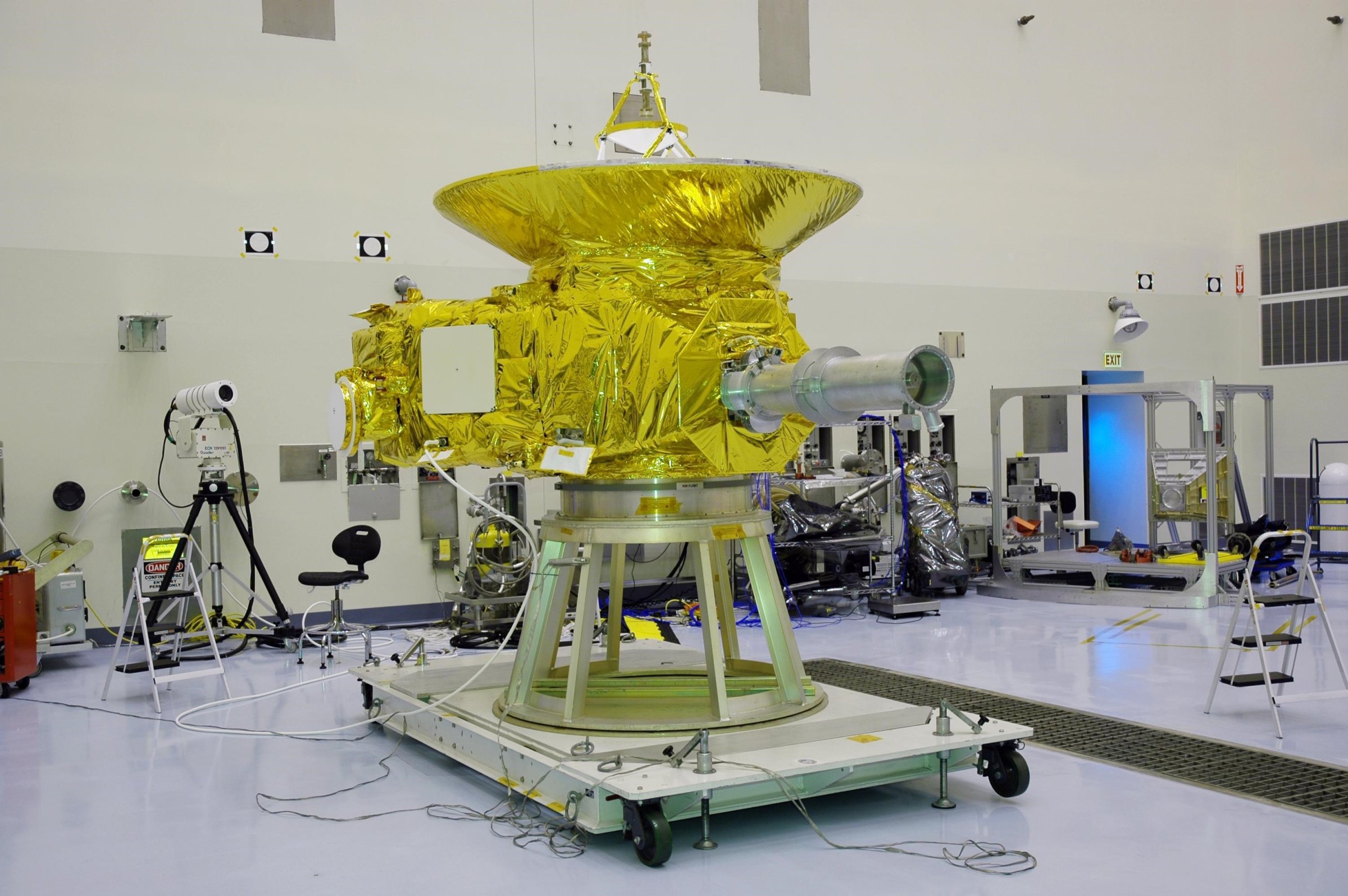
On Jan. 19, 2006, the Earth lost half a ton. More precisely, it lost 1,054 lbs (478 kg), but it’s O.K. to round down, since the 13 octillion-pound planet hardly noticed the missing weight. The flyweight fleck of matter was very much born of the planet, a collection of metal and silicon and copper and rubber and plastics and foil and a bit of plutonium hammered together into the New Horizons spacecraft. Launched atop an Atlas V rocket, New Horizons tore away from Earth at a blistering 58,500 k/h (36,400 mph), a record-breaking speed that seemed very much fitting, given that its destination was Pluto, 5.1 billion km (3.2 billion mi.) away. If you want to travel a distance like that, it’s best to make tracks.
New Horizons reached Pluto on July 14, 2015, becoming the first spacecraft to barnstorm the dwarf planet. Less than four years later, on Jan. 1, 2019, it passed the peanut-shaped, 36-km long Kuiper Belt object known as Arrokoth, a rocky, icy body in the river of similar comet-like objects that circles the solar system. That rendezvous too was a first. We’ve known about the Kuiper Belt since astronomer Gerard Kuiper theorized its existence in 1951, but we had never visited.
One little ship notching two space records ought to be accomplishment enough. But New Horizons is about to make headlines again. At precisely 8:42 a.m. EDT tomorrow, it will pass an invisible line in space that will place it 7.5 billion kilometers from Earth. That factors out to 50 astronomical units (AU)—or 50 times the distance from the Earth to the Sun—making New Horizons one of only a small handful of spacecraft to pass that cosmic milestone. There are a lot of ways to contemplate what a head-spinning distance 50 AU is, but one of the best is to consider that even moving at light speed, commands radioed up from Earth take more than seven hours to reach the spacecraft.
“Looking back at the flight of New Horizons from Earth to 50 AU almost seems in some way like a dream,” said Alan Stern, the spacecraft’s principal investigator, in a statement from NASA. “Most of us on the team have been a part of this mission since it was just an idea, and during that time our kids have grown up, and our parents, and we ourselves, have grown older.”
They will grow significantly older still before New Horizons is done with its work. That bit of plutonium aboard the spacecraft runs its radio-thermal generator (RTG), a nuclear power source that should keep it operating until the late 2030s. At that point, it will have more than doubled its current distance from Earth, eventually exiting the solar system altogether. In those years and across those miles, the ship will be looking for other Kuiper Belt objects in its path that may warrant a visit, and will be studying the space environment as it sails on to more and more rarefied distances.
For all of the miles New Horizons will put on its odometer, it will never set the record for the greatest distance a spacecraft will travel from Earth—the best it can do is come in fifth. Pioneer 10 and 11, launched in 1972 and 1973, are 129 AU and 105 AU away respectively. Voyager 1 and 2, launched in 1977, are 152 and 127 AU distant. The Pioneers carry plaques on their sides identifying the planet that dispatched the ships and, using outline drawings of a man and a woman, the ingenious species that invented them. The Voyagers go a step further, carrying gold plated records etched with images and sounds of Earth that will be revealed if an extraterrestrial species ever intercepts the spacecraft and puts the records on nothing more high-tech than a turntable. New Horizons carries no such elaborate commemorative marker—though the spacecraft itself serves as its own identifier, an object that had to come from the minds and hands of an intelligent civilization.
All five ships may well outlive that civilization. And, Newtonian physics being Newtonian physics, all five should continue flying forever—spreading ever outward from the embarkation point of our planet, crossing hundreds and then thousands and then uncounted more astronomical units. They are emissaries of Earth, little metal spores from Earth. If they outlast us, they will be among the few surviving records that humanity passed this way at all. Even when their generators go cold and the ships wink out, they will remain, in a sense, our last, best bid for immortality.
More Must-Reads from TIME
- Cybersecurity Experts Are Sounding the Alarm on DOGE
- Meet the 2025 Women of the Year
- The Harsh Truth About Disability Inclusion
- Why Do More Young Adults Have Cancer?
- Colman Domingo Leads With Radical Love
- How to Get Better at Doing Things Alone
- Michelle Zauner Stares Down the Darkness
Write to Jeffrey Kluger at jeffrey.kluger@time.com